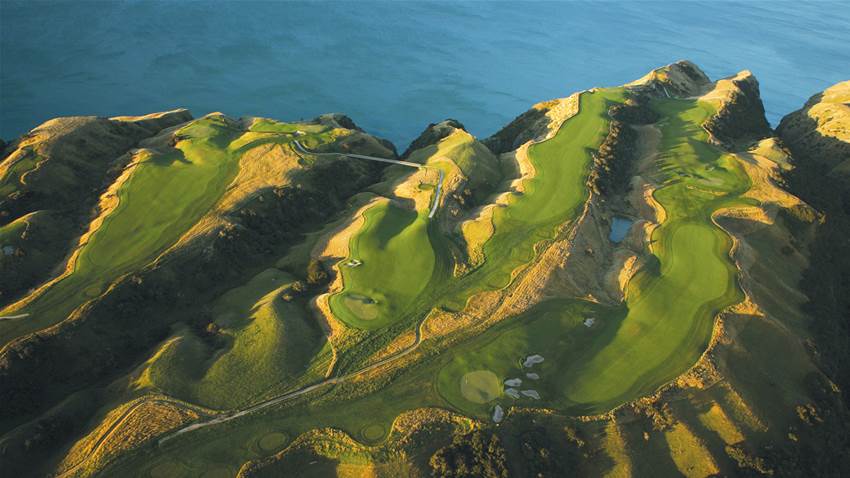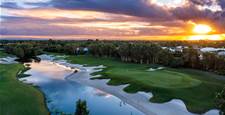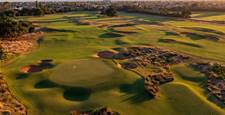There are more than 1,800 golf courses in Australia and New Zealand, but only a small percentage have the ingredients – the setting, history, dramatic holes, the tournament dramas – that combine to take your breath away during a round.
Here are the 50 courses across both countries we reckon will move you to say “WOW” … perhaps more than once.
ARROWTOWN GC
Arrowtown, South Island, NZ
Arrowtown blends beautifully with its setting, the surrounding rugged peaks and sheer cliff faces of Crown Range and The Remarkables.
There are no bunkers on this course … it doesn’t need them because its equivalent hazard are rocks. Big rocks, small rocks and schist outcrops that have been wonderfully incorporated into the design of many holes are what make this layout extraordinary.
Apart from the quirky and cool holes on the course, we suggest you visit in autumn when the maple, oak and cherry tree-covered landscape turns various shades of orange, yellow, red and brown.
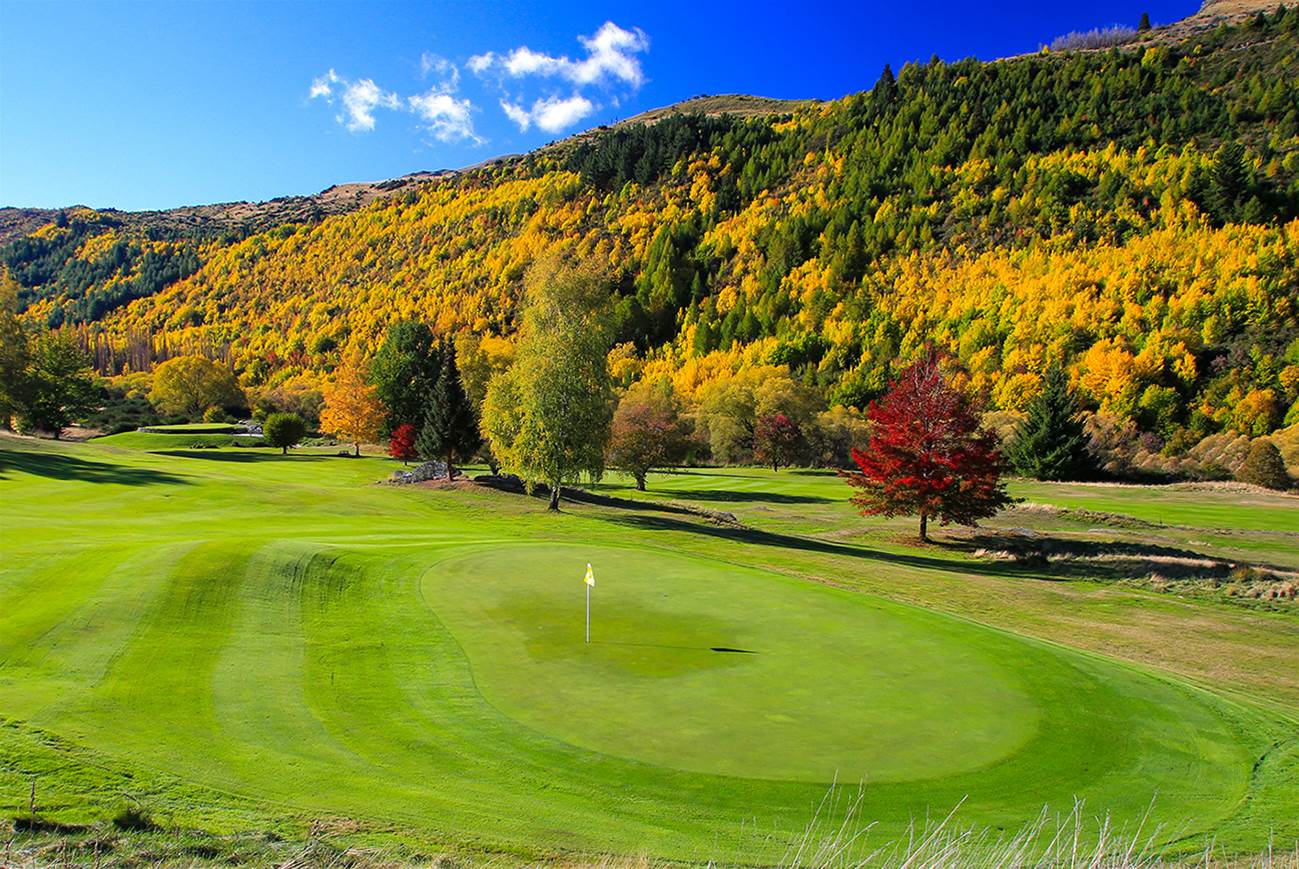
BARNBOUGLE DUNES
Bridport, Tasmania
Barnbougle Dunes put Tasmania on the international golfing map when it opened for play in 2004.
Designed by Tom Doak in collaboration with Mike Clayton, Barnbougle Dunes – the first links course built in Australia in nearly 80 years – has since cemented a place among the world’s top-100 courses and is also among Australia’s finest.
The all-fescue playing surfaces, the challenging and fun Doak-Clayton design and the dunescape setting along beautiful Tasmania coastline combine to provide an unforgettable golfing experience.
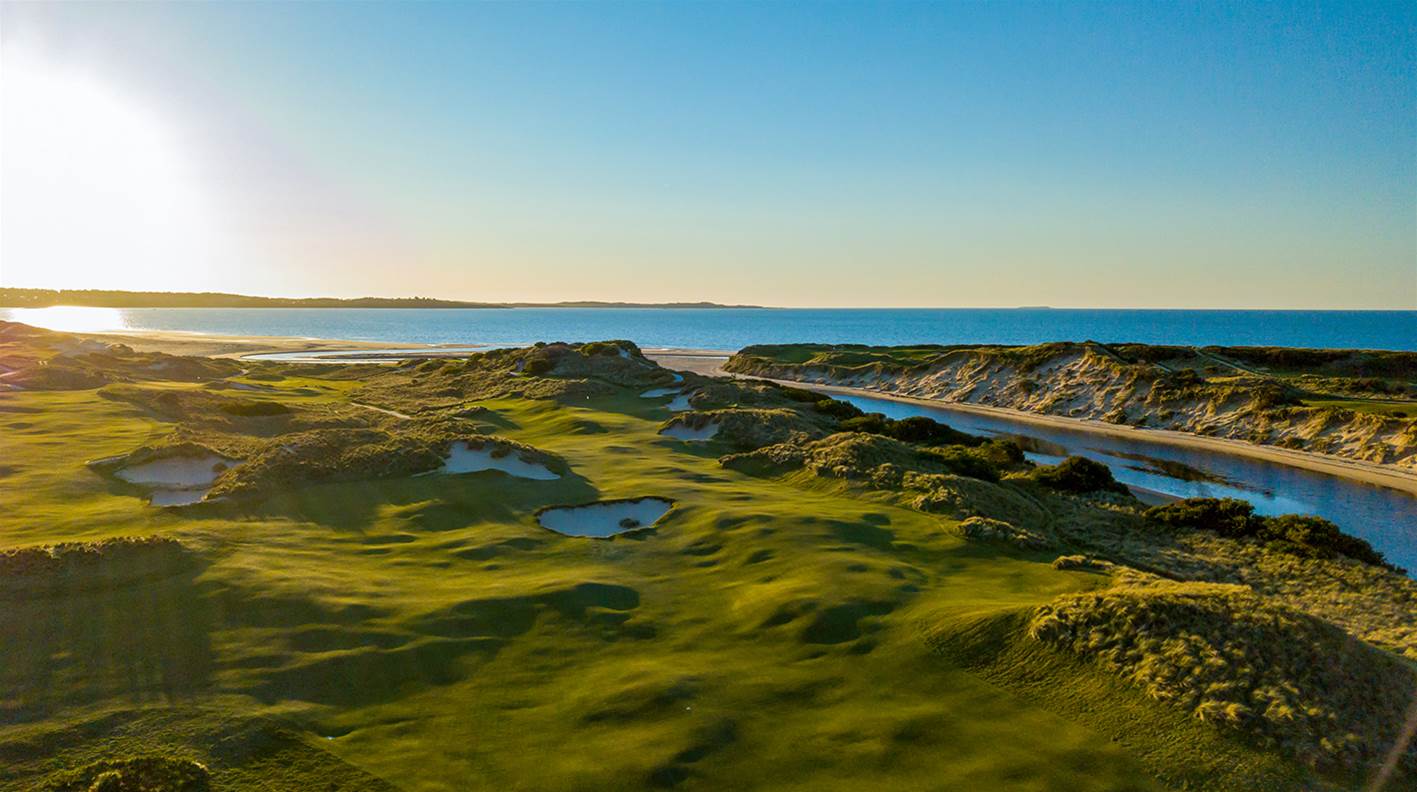
BARNBOUGLE LOST FARM
Bridport, Tasmania
Almost six years after the Dunes opened for play, the Bill Coore-designed Barnbougle Lost Farm was born.
Coore’s 20-hole creation (with two extra par-3s on the inward half) hugs the sea where possible but it also takes advantage of the fine golfing terrain found just inland from the beach. This has resulted in a layout that plays to all points of the compass and, with the ever-present wind, makes for a wonderful variety of shots during the course of a round.
Lost Farm is fun, world class golf of the highest order.
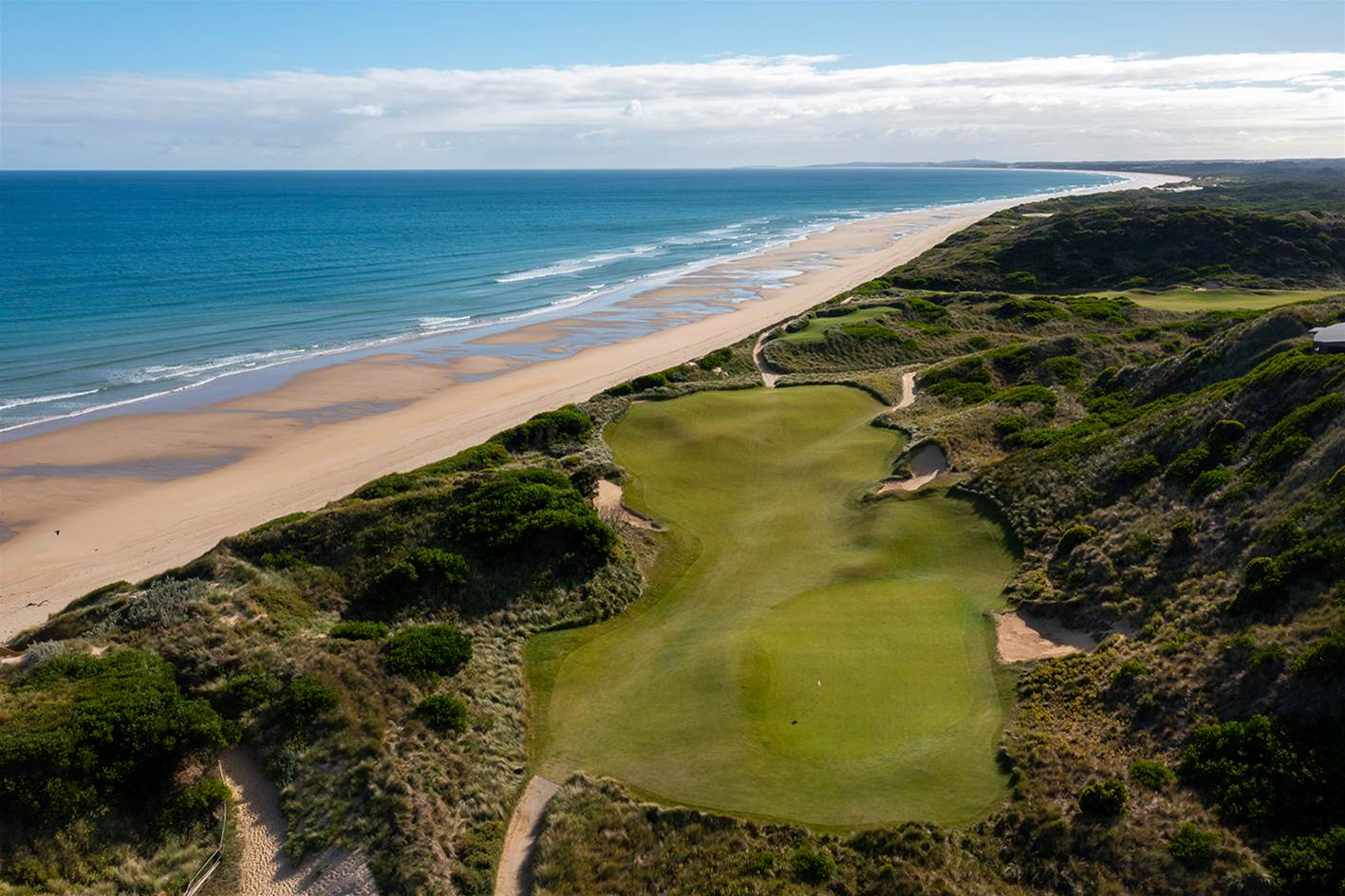
BOUGLE RUN
Bridport, Tasmania
The newest addition to the Barnbougle family, having opened earlier this year, is already considered one of the best short courses on the planet.
The Bill Coore-designed 14-hole layout, with 12 par-3s and two brilliant short par-4s, twists and turns over and through high, dramatic sand dunes away from the edge of the beach, providing views over the entire Barnbougle property.
Bougle Run is fun from 1st tee to 14th green. Play it with all your clubs, three clubs or just a putter … you read that right as Coore designed each hole with one playing line that could be covered by a putter. Incredible!
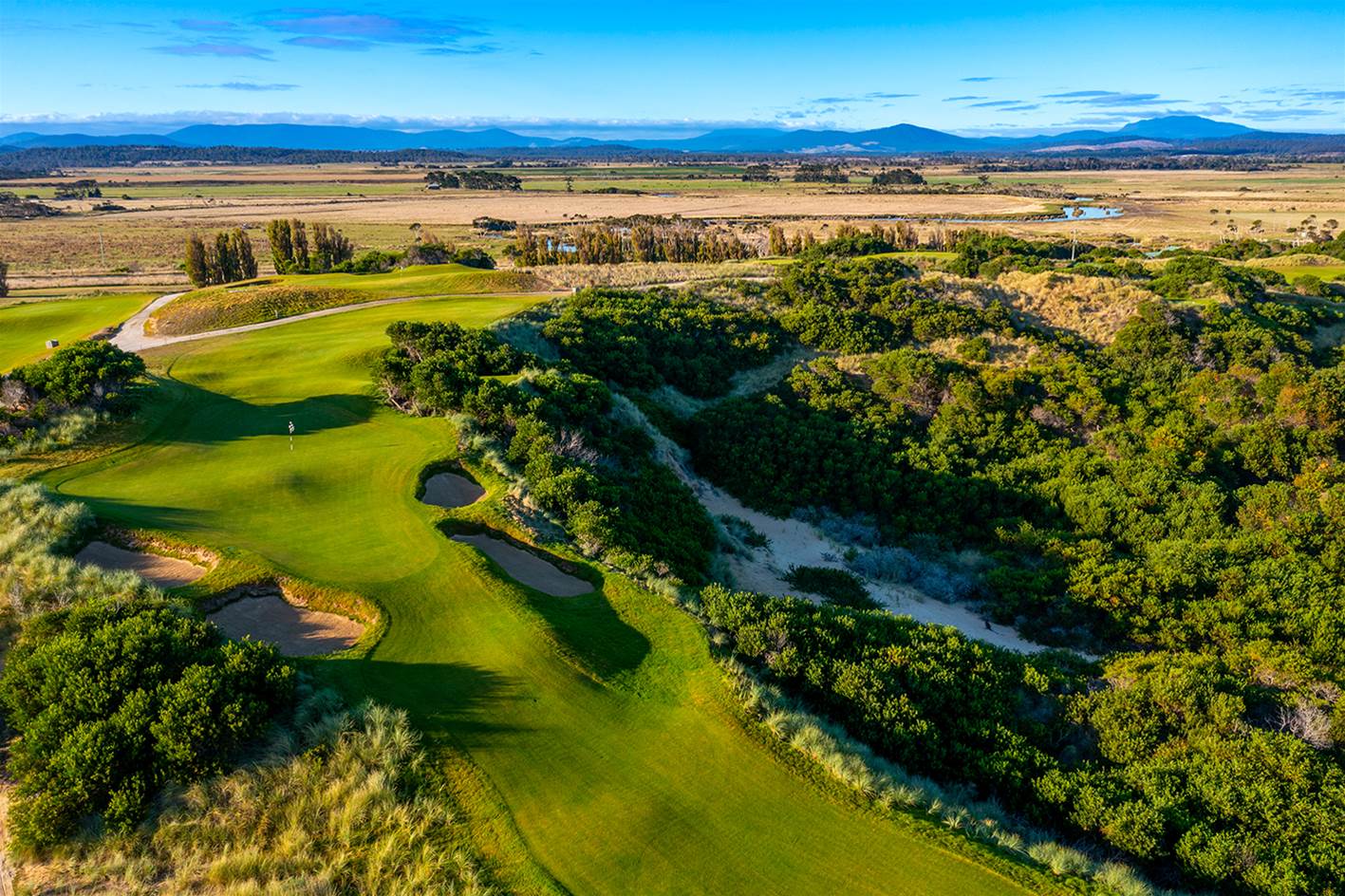
BARWON HEADS GC
Barwon Heads, Victoria
Barwon Heads possesses great Old-World charm and there are plenty of challenges and fun holes to experience.
Recent changes overseen by course designers Neil Crafter and Paul Mogford (Golf Course Strategies) have elevated this superb Bellarine Peninsula layout to its highest ever national ranking.
The sequence of holes from the 1st to the 8th are as much fun as you can have on an Australian course, while the year-round conditioning rarely wavers from being simply superb.
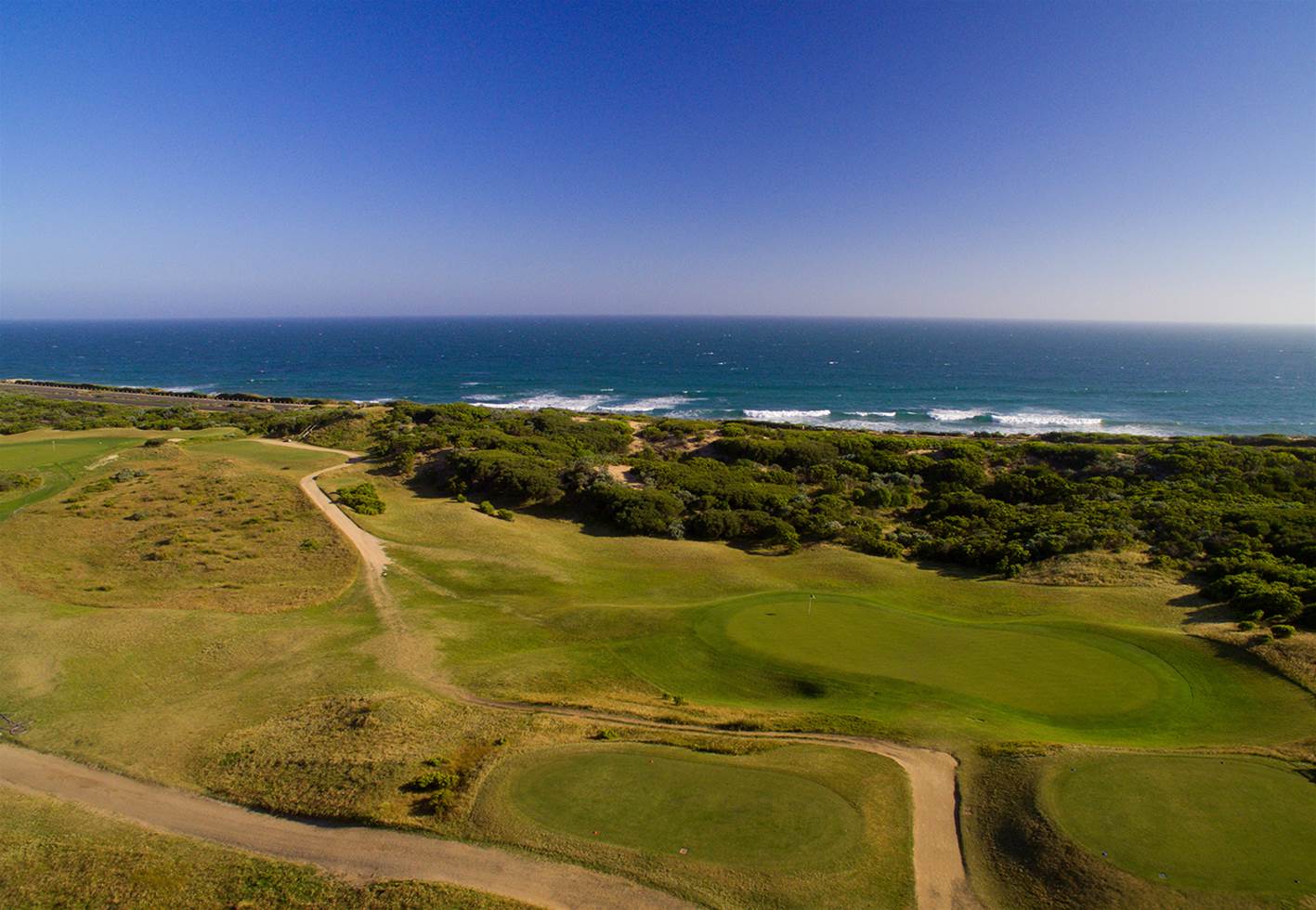
BONVILLE GOLF RESORT
North Bonville, NSW
Carved from 250 hectares of Flooded gum and blackbutt forest as well as small pockets of sub-tropical rainforest, Bonville has often been described as Australia’s answer to Augusta National.
Designers Terry Watson and Ted Stirling were given a brief by the original owners to create a course like Augusta and the pair did a fantastic job in creating a local version incorporating many features Augusta is famous for – great elevation change between tee and green, natural watercourses, large undulating greens and demanding bunkers.
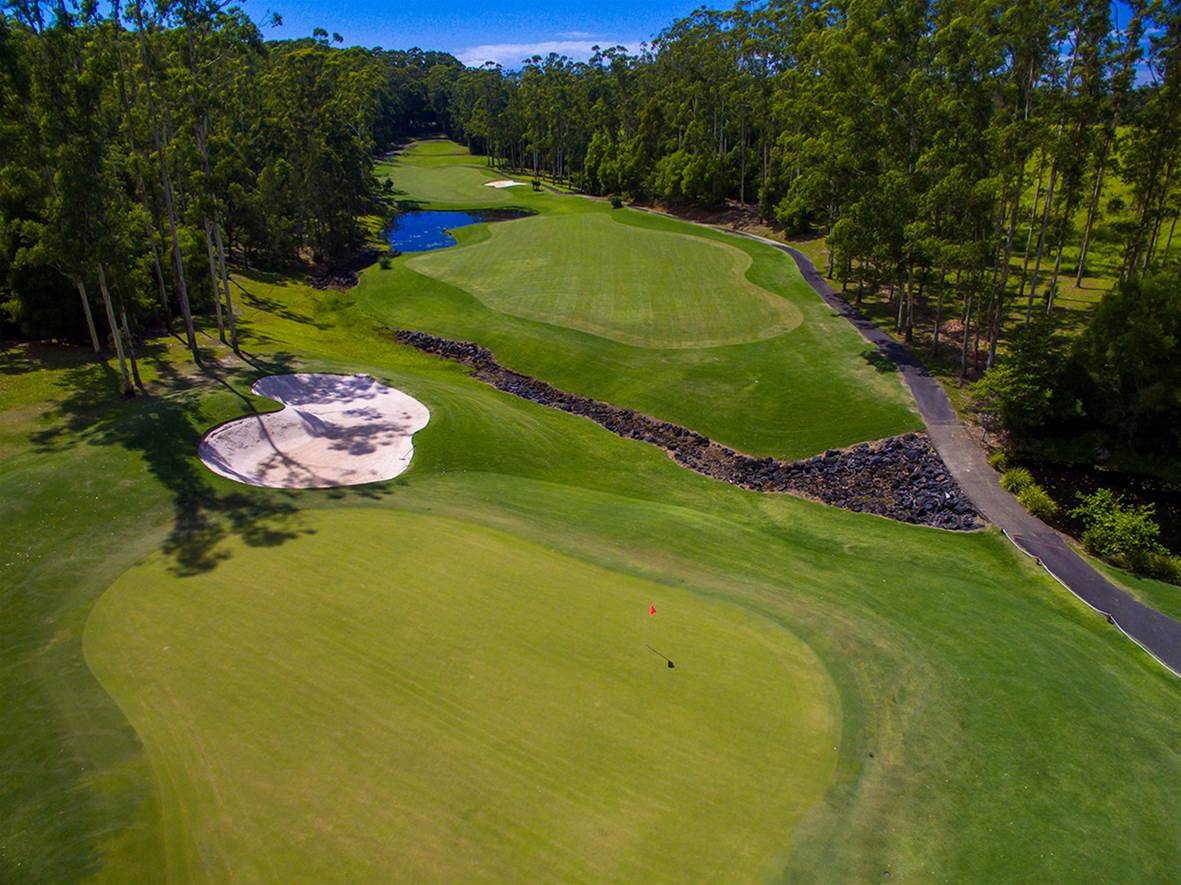
BROOKWATER G&CC
Brookwater, Queensland
The Greg Norman and Bob Harrison-designed Brookwater is one of Australia’s most spectacular inland courses.
There is an overwhelming Australian feel about the course with towering Eucalypts and Ironwoods, tall wild grasses and the occasional kangaroo bounding across a fairway. It is a beautiful setting.
Brookwater doesn’t really have a signature hole, but if you are a first-time visitor, we guarantee you will be moved to say “wow” when you stand on the tee at the par-5 4th hole. Ahead from the elevated back tee lies 551 metres of rollercoaster fairway, culminating in a green cut high into a hill some two valleys away. It is an awesome hole, with bunkers placed strategically at intervals along the fairway and surrounding the green. Pars are rare here; birdies are probably wishful thinking.

CAPE KIDNAPPERS
Hawkes Bay, North Island, NZ
“If Cape Kidnappers were a book, it would be an epic.” With these words, acclaimed American course designer Tom Doak concisely, but accurately, describes what is one of the most spectacular courses built in the world during the past 50 years.
With each hole you play at Cape Kidnappers there is another twist in the plot. This is one ‘book’ you will never want to put down.
Faced with having to route the course along, and across, fingers of land surrounded by jagged cliffs that stretch 150 metres (500 feet) above the Pacific Ocean, Doak created holes that are not only playable (nearly all the long holes play with the prevailing wind) but are a lot of fun to play.
“You’ll never play golf like this anywhere else,” Doak says.
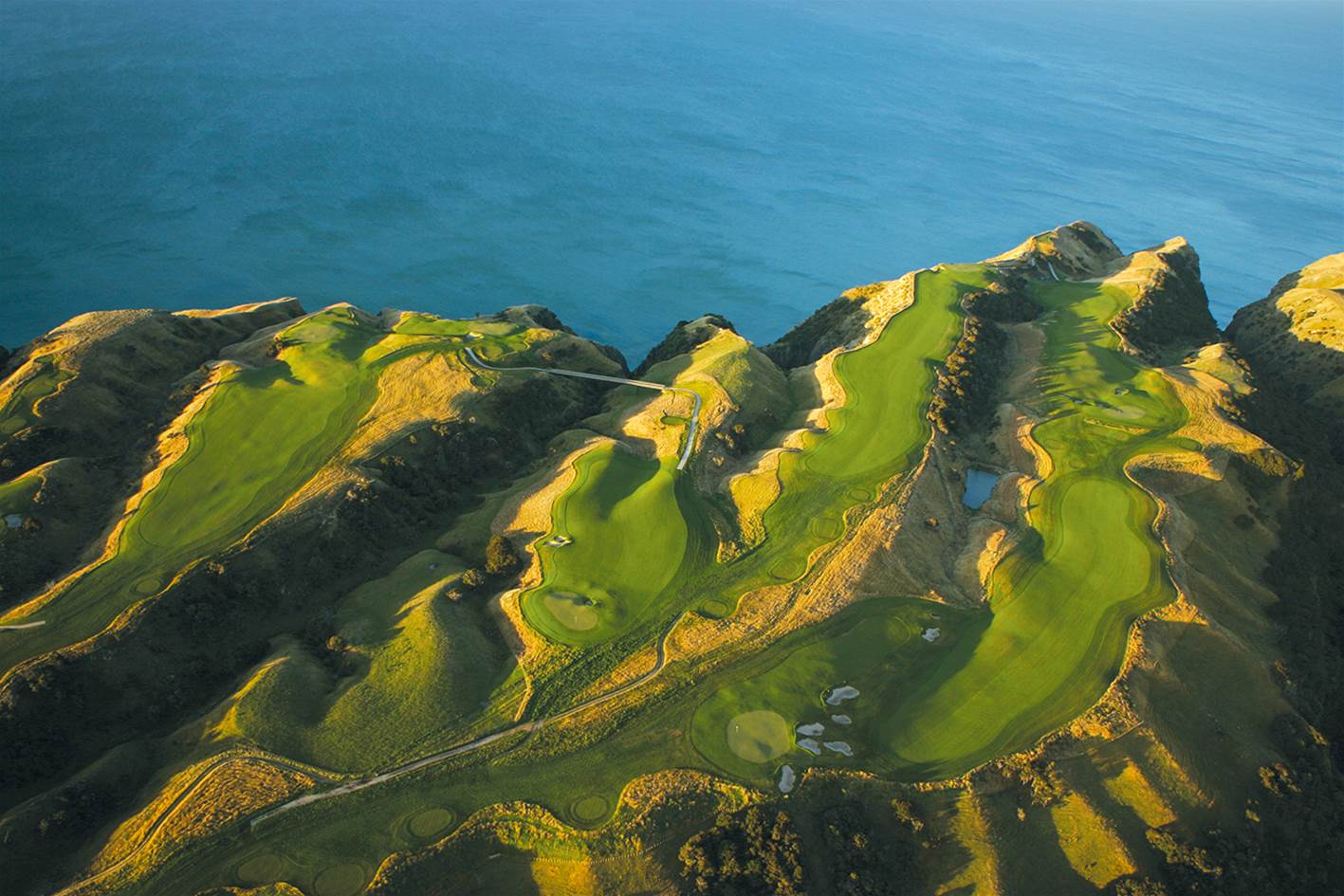
CAPE WICKHAM LINKS
King Island, Tasmania
There are few more picturesque settings to play golf than what takes your breath away at Cape Wickham.
The routing is brilliant, with eight holes set against the rocky coastline and another two where any approach shot is played towards an ocean backdrop. You can see Bass Strait from every hole. Some holes sit high above the sea, on others you’re so close to the water you can feel the sea spray.
Just when you think this layout could not get any more spectacular, you walk off a green, over a dune and down to the next tee where your jaw drops again as you take in the vista.
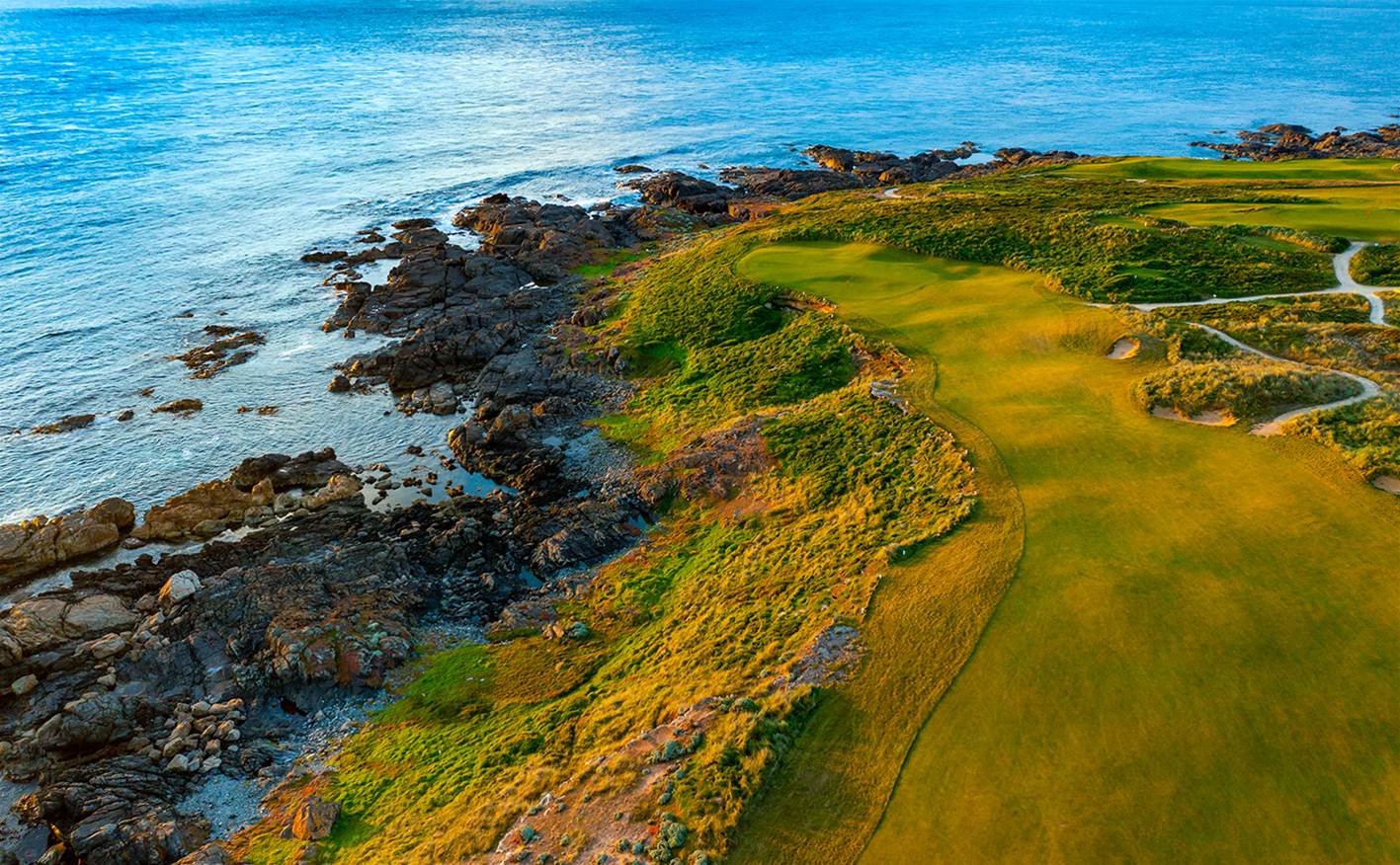
CATHEDRAL LODGE & GC
Thornton, Victoria
The first time Greg Norman visited the site for his future design, Cathedral Lodge, he fell in love with the place.
What’s not to love … rolling hills set against a backdrop dominated by the Cathedral Range in the distance. It’s a naturally spectacular setting.
“Cathedral Lodge is very special to me as there is nothing else like it in Australia, or the world for that matter,” Norman said at the course’s opening in 2017.
If you’re lucky enough to get the opportunity to play this very exclusive layout, we’re pretty sure you will be ‘wowed’ from start to finish.
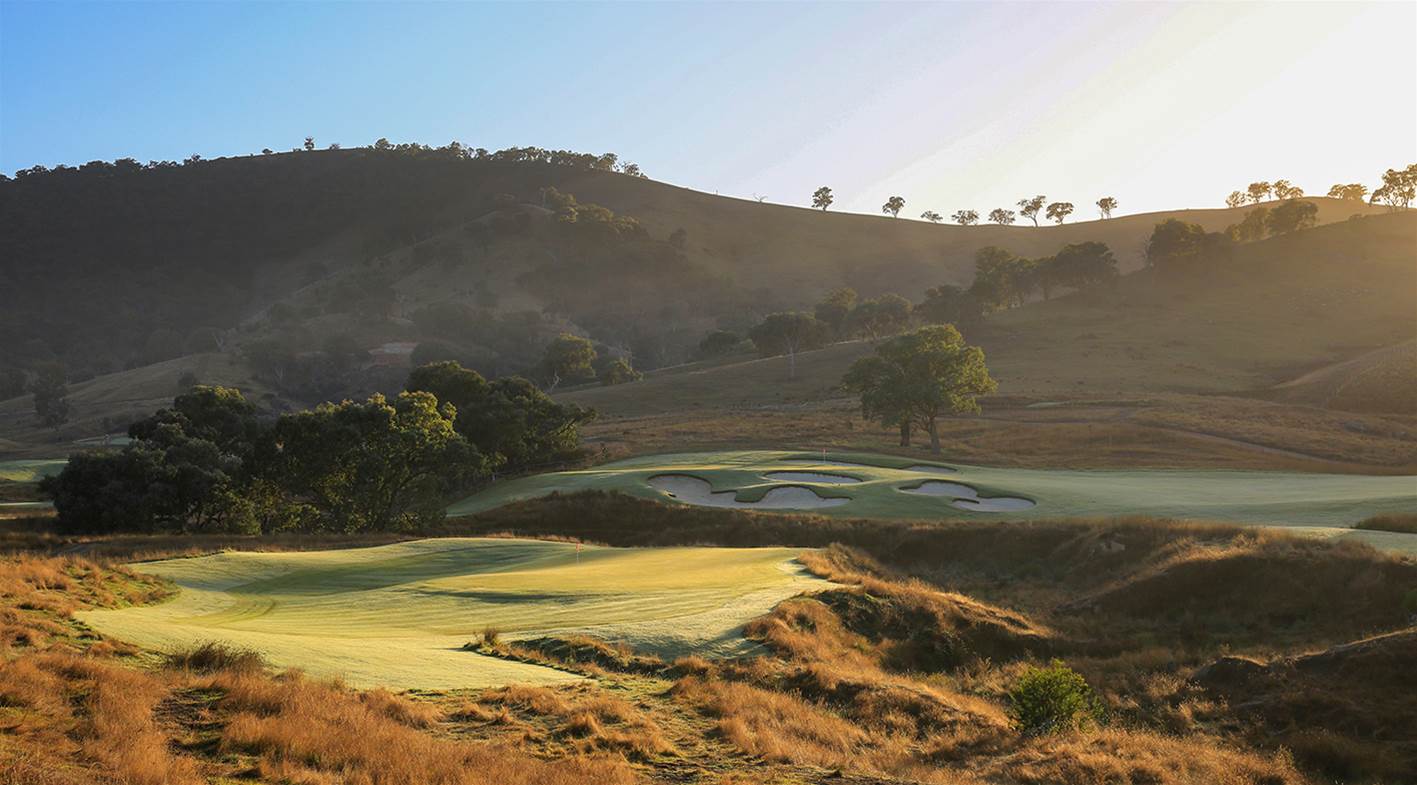
CHISHOLM LINKS
Dunedin, South Island, NZ
One of only a few genuine links courses in New Zealand, Chisholm Links could easily have been plucked from the Scottish coastline and dropped in Dunedin.
Fourteen of the 18 holes weave their way among the dunes at the back of St Kilda Beach, while the stretch of holes from the par-5 8th to the par-5 11th leads players on a climb up to a picturesque headland.
There are amazing views from most holes but it is the charm and simplicity of this seaside design, which it shares with hidden gem links of Great Britain and Ireland, that you will love and want to play again and again.

ELLERSTON
Ellerston, NSW
Not dissimilar in many ways to Cathedral Lodge – a picturesque rural setting forms the backdrop to a spectacular Greg Norman and Bob Harrison layout.
But where Cathedral Lodge is accommodating for players of all standards, Ellerston is not.
When Kerry Packer commissioned Norman and Harrison to create the course, his brief was to make it tough, and it is unashamedly so with demanding drives and exhilarating approach shots. And – given its exclusivity and small number of players annually – it might just be the best conditioned course in the land.
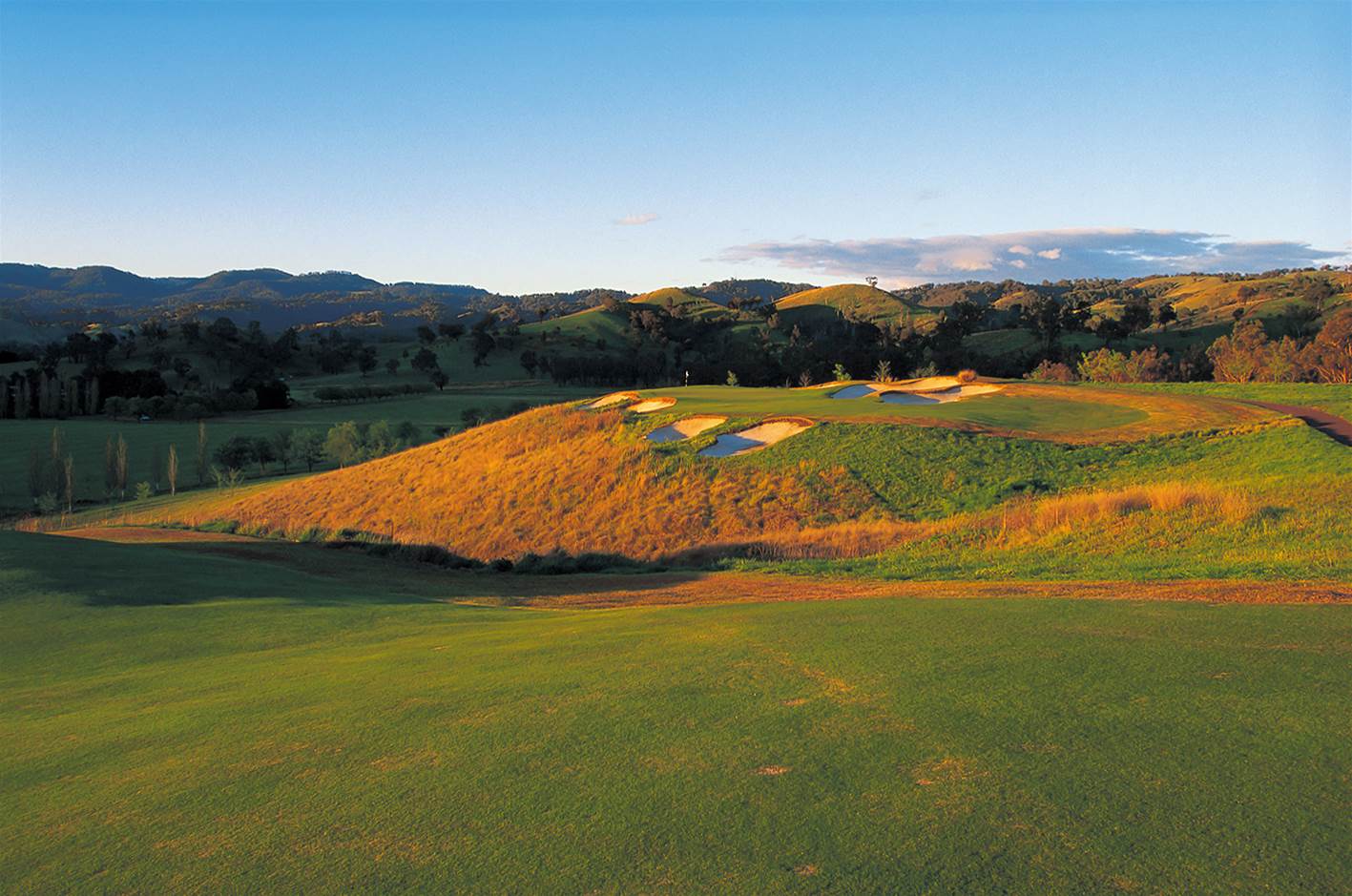
HAMILTON ISLAND GC
Dent Island, Queensland
“Hamilton island is one of the most beautiful golfing venues in the world,” says 1991 Open Champion Ian Baker-Finch.
“The golf course is spectacular. It can be a tough course because there is always some kind of wind. But if you go there with the idea it’s going to be a beautiful day, and a great opportunity for some spectacular photography, take in the views and enjoy the course. Amazing!” Can’t argue with that.

JACK’S POINT
Queenstown, South Island, NZ
Laid out over rugged undulating terrain between The Remarkables mountain range and the cliff tops above Lake Wakatipu, Jack’s Point is a spectacular course in equally spectacular surrounds.
The rugged nature of the landscape becomes apparent early in the round with large boulders dotting the edge of holes and huge rocks peeking through the slopes of dramatic mounding and steep banks, which are often covered with unwelcoming clumps of thorny bushes.
No matter where you look the views here are breathtaking.

JOONDALUP RESORT
Connelly, WA
What to do with an abandoned limestone quarry? Build a unique 27-hole golf course on it, of course.
That’s what they did at Joondalup and the fertile imagination of course architect Robert Trent Jones Jnr transformed the quarry landscape into three loops of nine holes, creating three 18-hole combinations that all rank in the top-100 in the country.
There are ‘wow’ moments everywhere, but few are bigger than standing on the tee at the par-3 3rd of the Quarry nine, mid- or short iron in hand with a deep quarry pit between you and the green. It’s just one of dozens of exhilarating shots Joondalup has to offer.

KALGOORLIE GC
Kalgoorlie, WA
Kalgoorlie is a marvel of modern golf course construction.
The Graham Marsh-designed layout, which has been entrenched in Australia’s Top-100 Courses ranking since opening in 2010, was once part rubbish tip, part parched flatland on the outskirts of the goldfield town. You wouldn’t know it today.
This is one of the world’s great desert courses, mainly due to the design incorporating the rugged areas away from the fairways and greens. Then there are the contrasting colours of the playing surfaces next to the ochre desert sands. Truly beautiful.

KAURI CLIFFS
Bay of Islands, North Island, NZ
It’s not hard to see why, that within months of opening for play in 2000, Kauri Cliffs was ranked among the world’s top-100 courses.
It has often been compared to the famed Pebble Beach layout, on California’s Monterrey Peninsula, which is ranked in the top-10 of that global list.
But Kauri Cliffs is far more spectacular than the American tournament course as it sits much higher on the cliff tops above the Pacific Ocean and covers a far more dramatic golfing topography.
The unhurried nature of a round (tee times are 20 minutes apart) at Kauri Cliffs gives you time to appreciate the spectacular creation by American course designer David Harmon, as well as marvelling at the postcard views of the Cavalli Islands, that lie just off the coast.

KINGSTON HEATH GC
Cheltenham, Victoria
Kingston Heath is one of the world’s finest courses. And it has been for a long time.
When Dr Alister MacKenzie visited Melbourne in 1926 he said: “The course has been so well constructed … there is little for me to suggest with the exception of the bunkering plan.”
The Heath’ doesn’t boast great elevation change or magnificent scenery.
What it has is the creativity and strength of Dan Soutar’s brilliant routing in such a confined space, which is only outdone by the bunkering, which was added to the layout by MacKenzie and masterfully constructed by Mick Morcom, the course superintendent who
brought MacKenzie’s Royal Melbourne sketches and masterplan to life.
As English pro Ian Poulter accurately stated during the 2016 World Cup: “Kingston Heath is totally awesome.”

KINLOCH CLUB
Lake Taupo, North Island, NZ
Jack Nicklaus played an exhibition match and a spot of fly-fishing in Lake Taupo in the 1970s.
He fell in love with the place and when the opportunity arose to design a course in the area, he jumped at the chance. The result was one of the best layouts Nicklaus ever created.
This links layout is a real departure from Nicklaus’ traditional American parkland design style. Instead, Nicklaus has aimed to create a Scottish links. The bunkering is rugged and varies greatly in shape, depth and size, while the rolling fairways of the front nine become more dramatic in their elevation change. And the greens, they’re big and feature plenty of twists and turns.

LONG REEF GC
Collaroy, NSW
Occupying the Long Reef headland, on Sydney’s northern beaches, every shot on this par-71 also offers an ocean view.
It’s not a long course but it is a whole lot of fun … especially when the wind blows.
While the entire course is certainly exposed to the elements, the highest reaches of the layout across the top of the headland are certainly more affected by the wind. No hole is more affected by the wind than the 138-metre par-3 13th, which faces south and into the prevailing breeze. It might be the shortest of Long Reef’s par-3s but a wide range of clubs can be used from the tee to find the green. Hit this green when a southerly buster is roaring up the coast, and you will definitely say “wow”.

LONSDALE LINKS
Point Lonsdale, Victoria
First hole … “Wow”. Second hole … “Wow”. Third hole … “Wow”. You get the idea.
Extensively redesigned by the Ogilvy Cocking and Mead design team and reopened for play late last year, Lonsdale Links was not created to be a long and brutal challenge. It was, however, designed to be engaging and fun every time you play the layout.
Inspired by some of the ‘rock star’ architects of golf’s Golden Age, Lonsdale features wild green complexes, rugged bunkering and sandy wastelands throughout the visually spectacular journey.

MAGENTA SHORES G&CC
Magenta Shores, NSW
Golf by the sea is always inspiring … the smells, the sounds and the rolling
sandy terrain.
In an incredible feat of course design and construction, that’s what Magenta Shores offers on land once occupied by a rubbish tip. There are memorable holes everywhere but its designer, Ross Watson, pinpoints the par-3s as highlights.
“They really possess that ‘wow’ factor and I modestly suggest that given time they could be recognised as the best collection of par-3s anywhere in Australia,” he said. “In my view, they’re that good. Each faces a different direction, on the cardinal points, which adds so much to their collective appeal.”
We agree, wholeheartedly.

METROPOLITAN GC
Oakleigh South, Victoria
Established in 1908, Metropolitan is the second oldest golf club in the Melbourne Sandbelt. While the course has changed dramatically during the past century, the layout, in all its forms, has always been a pin-up for beautifully manicured playing surfaces.
When the course played host to the World Cup in 2018, every player to a man raved about the quality of the greens and fairways and the Sandbelt design, especially how the bunkers are cut right in to the edge of the putting surfaces.

MILLBROOK RESORT
Arrowtown, South Island, NZ
The stunning landscape seen by millions of people in the film trilogy, The Lord of the Rings, forms the backdrop to Millbrook Resort, which is now a 36-hole complex.
The home of the NZ Open is wonderfully manicured with superb bentgrass greens. The tees are also bentgrass and along with the greens they present a colourful contrast to the varying shades of fescue grasses on the fairways and in the rough.
Adding to the colour spectrum is the wide variety of alpine trees – Sycamore, Oak, Sugar Maple, Elm, Ash, Douglas Fir and Flowing Cherry burst into vivid shades of red, orange and purple across the landscape in autumn.

NAROOMA GC
Narooma, NSW
Narooma is one of the most visually striking golf courses in Australia combining magnificent ocean views with dramatically undulating holes weaving through dense tall timber country.
The 141-metre par-3 3rd defies you to take on an ocean water carry. The tee shot here is fraught with danger as your ball must be played over a chasm with waves crashing onto rocks below. A sea cave carved out of the cliff beneath the green makes this hole one you will never forget.
Narooma could easily leave you wanting more based on the views alone, but once you have played it you’ll want to go again.

NEWCASTLE GC
Stockton, NSW
Carved from rugged bushland and dense Ti-tree, the fairways of Newcastle bend, twist, roll and sidestep their way over often dramatic sandy terrain that was barely disturbed by the designers nearly 90 years ago.
The routing traverses the contours of the landscape beautifully and, as a result, presents some blind tee shots and a wide variety of awkward lies for approaches into greens.
The 7th, at 143 metres, is a classic short par-3 you won’t forget. There is no room for error from the tee as your shot must be struck through a chute of tall Eucalypts and all care must be taken to avoid a pod of bunkers short of the green.

NEW SOUTH WALES GC
La Perouse, NSW
Built by nature and originally enhanced by the creative minds of local designer Eric Apperly and the legendary Dr Alister MacKenzie, New South Wales has few rivals worldwide for presenting such an array of fascinating and spectacularly natural seaside holes.
There are plenty of highlights during a round but first-timers, while being impressed by the opening quartet of holes, will be awestruck by the layout’s dynamic duo – the 468-metre par-5 5th and the 177-metre par-3 6th holes.

OCEAN DUNES
King Island, Tasmania
Ocean Dunes’ seaside holes are not only visually spectacular but are designed to give you plenty of options depending on the conditions of the day.
The opening quartet sets the bar pretty high from the outset, while the 10th and 11th holes are unforgettable gems. Graeme Grant’s design doesn’t back off when the layout moves inland across and through the massive dunes.
The design aside, the presentation of Ocean Dunes’ playing surfaces are first class.

PARAPARAUMU BEACH GC
Paraparaumu, North Island, NZ
Fans of traditional links courses simply love Paraparaumu Beach, which covers rugged, windswept dunesland and has changed very little in nearly 80 years.
Acclaimed American course designer Tom Doak, long before he returned to New Zealand to create Cape Kidnappers, listed Paraparaumu (pronounced Para-param) in his top-14 links courses in the world, alongside the likes of the Old Course at St Andrews in Scotland, Northern Ireland’s Royal County Down and Ireland’s famous Ballybunion.
The late Peter Thomson was just as smitten with the Kiwi links.
“I loved it instantly. We had nothing like it in Australia, which must have struck Alex Russell, who did the layout. Course designing approaches an art form, especially done in a perfect modelling medium like volcanic sand. Russell must have been ecstatic.”

PENINSULA KINGSWOOD CGC – North & South Courses
Frankston, Victoria
The major renovations by OCCM (Ogilvy, Clayton, Cocking & Mead) here have been nothing short of outstanding.
As a result, one of the best parcels of golfing terrain on the Melbourne Sandbelt is now home to a 36-hole complex of indisputable world-class quality.
The North Course (pictured inset) features exceptional green complexes, and stunning bunkering that are complimented by pure playing surfaces.
Its South Course (main photo) neighbour, which was rebuilt on a slightly bigger scale, with broader fairways, greater elevation changes as well as bigger hazards and greens.
The sheer grandeur of the golf at Peninsula will enthral you from the 1st tee to last.

PORT FAIRY LINKS
Port Fairy, Victoria
Port Fairy’s “wow” starts before you even stand on the 1st tee. It begins when you hand over just $49 to play 18 holes.
When you walk off the 18th green you realise you’ve just played one of the best value-for-money rounds in Australia. Even world-renowned course designer Tom Doak was impressed.
“I can’t think of a better golf course for $49 in this day and age,” he said after his visit.
There are plenty of highlights, but the stretch of seaside holes from the 12th to the dogleg par-4 16th are worth double the green fee alone.

QUEENSTOWN GC
Queenstown, South Island, NZ
The Queenstown layout occupies a stunning piece of golfing land on the Kelvin Peninsula, offering 360-degree views across Lake Wakatipu to Frankton, Queenstown and the Remarkables.
This is one of New Zealand’s most scenic courses and, as such, the quality of the golf is arguably underrated.
One highlight is the challenging 362-metre par-4 5th, which is flanked by Lake Wakatipu to the left as the fairway follows the shoreline as it climbs uphill to the two-tiered green. The aggressive player can hit their drive over the edge of the lake, on the line of a protruding boulder, to significantly shorten the hole but it is a high-risk, but exhilarating, play.

ROYAL MELBOURNE GC – West Course
Black Rock, Victoria
We could fill dozens of pages of this magazine heaping praise on Dr Alister MacKenzie’s world famous design. We could, but we won’t.
All you need to know is this course sets the benchmark by which all other Australian courses are measured. It has been the No.1 layout in this country for as long as ranking lists have existed simply because it has more world class holes than any other course in the country.
Every great player in the game for the past 60 years – from Jack Nicklaus and Peter Thomson, to Greg Norman and Tiger Woods – has walked its hallowed fairways and been moved to praise the genius of the design and the high standard of its playing surfaces.

ROYAL MELBOURNE GC – East Course
Black Rock, Victoria
Royal Melbourne’s East Course might just be the most underrated layout in the nation.
The East doesn’t have the beautiful rolling terrain that is a highlight of the neighbouring West course but does boast the visual pleasure of Alex Russell’s fine design. The routing and use of the land is first class and stamps this as Russell’s finest work.
The seven East layout holes contained within Royal Melbourne’s main property are the highlights of the round, with Russell’s creative touches here producing some world class holes.

ROYAL ADELAIDE GC
Seaton, Adelaide
In the ‘City of Churches’, Royal Adelaide is the golfing equivalent of the Vatican – it is the city’s most famous golfing attraction and every visiting golfer should make the pilgrimage to the Dr Alister MacKenzie-designed layout.
Royal Adelaide was already in the ground when the Good Doctor visited in 1926. It’s rise to world class status began with his visit and continues today thanks to recent design tweaks overseen by Tom Doak.
Many elements of MacKenzie’s design have been untouched, including one of the best short par-4s in the country – the 260-metre 3rd hole with its “leg of mutton” shaped green protected by a grassy knoll.

ST ANDREWS BEACH
Fingal, Victoria
Imagine the dilemma … you have to design a golf course on land so good, it becomes a challenge to leave holes out of the mix.
That’s what American designer Tom Doak faced at St Andrews Beach.
“The land here was so good for designing a golf course that it became difficult
to decide which holes we couldn’t build,” he said.
“In some cases, we just had to find the right spot to put a green, locate the nearest high point near that green to put the next tee and the following hole would present itself. I can’t help but feel that Alister Mackenzie would be mad that he never got the chance to design a course on land this good.”
So, if Doak had to reject some good holes, the ones that have been left behind must be great. They are and, as a result, St Andrews Beach has been cemented in the top-20 ranked courses in Australia since it opened in 2005.

TARA ITI GC
Mangawhai, North Island, NZ
Here is yet another Tom Doak-designed gem that lies by the sea and fills the nostrils with the smell of links golf.
Acres of non-native pine and wattle trees were removed (in some cases buried to form huge sand dunes), leaving a sandy site that was revegetated with fescue grass, spinifex and other native plants.
Doak’s creation is relatively simple – there are no trees, water hazards or penal rough, just fairways, greens and tees. There is, however, plenty of sand away from the best playing lines … beautiful big areas of sandy wasteland that look like they have been there for hundreds of years.
Like so many of the courses featured here, Tara Iti has plenty of highlights (so it shouldn’t surprise it is New Zealand’s No.1 ranked course) but the beachside par-5 6th with its dramatically rumpled fairway is one hole you will find hard to forget.

THE COAST GC
Little Bay, NSW
The Coast is not a long golf course, but its challenge comes in controlling your ball in the inevitable wind that comes from playing by the sea.
Panoramic ocean views are readily available from all corners of the layout but the crashing waves on the shore really only become noticeable when you reach the 4th tee. The 183-metre par-3 is one of only a handful of holes in Australia where you play so close to the ocean you can feel the sea spray on a choppy day. Here, the tee shot is played along the edge of the rocky coastline and is totally exposed to the elements. It will simply take your breath away.

THE CUT GC
Port Bouvard, WA
The Cut is a course of contrasting landscapes – there are the visually stunning oceanside holes, a stretch of five holes in a residential estate and arguably one of the best back nine stretches to be found in Australia.
The inward half at The Cut ramps up the excitement with holes that are more undulating than the outward nine and dense walls of native shrubs lining most of the fairways.
High dunes play a major role in James Wilcher’s design, as do a combination of natural wild bunkering and manicured traps, which punctuate strategic points en route between tee and green on every hole.

THE DUNES LINKS
Rye, Victoria
Lying in the heart of treasured golfing terrain on Victoria’s Mornington Peninsula, The Dunes is a beautiful natural course that winds through valleys and over large dunes.
It’s designer, Tony Cashmore, is humble when talking of his role, saying he just chose the spots for the greens and tees “God did the rest … we just mowed everything in between.”
The outstanding highlight of a round at The Dunes is Cashmore’s trademark natural bunkering – a combination of wild rugged expanses of sand with well-placed deep pot bunkers that are designed to intimidate and penalise mis-hits.

THE HILLS GC
Arrowtown, South Island, NZ
Natural landmarks like The Remarkables, Coronet’s Peak and Crown Range, all create a natural amphitheatre around The Hills.
The Hills is the pride and joy of jewellery entrepreneur Michael Hill, who spared no expense in creating the brilliant layout, which is dotted with native and exotic trees including Lombardy poplars, Golden and Tortured willows, Flowering hawthorn, Maples and Sequoia.
In addition to its spectacular surrounds and the outstanding design of the layout, golfers are treated to various art works – created by Hill’s son, Mark – scattered around the course.

THE LAKES GC
Eastlakes, NSW
The Lakes – with water coming into play on half its holes – is one of Sydney’s iconic courses, having gained plenty of fame over the decades as a regular host venue for the Australian Open.
But it has achieved its biggest accolades since Mike Clayton redesigned the layout in the mid 2000s, exposing the open sandy wastelands of the original course, which had disappeared under the trees.
Clayton has opened up vast tracts of the course that were hidden by trees and scrub for decades, which has widened the playing lines and mis-hits are no longer lost in scrub but players must now fashion a recovery from an uneven, sandy lie or from long grass.

THE NATIONAL GC – Gunnamatta Course
Cape Schanck, Victoria
Less than two years after it officially opened for play, Tom Doak’s extensive reworking of the club’s Ocean Course has gained a reputation for being one of the country’s most fun courses to play.
Golf Australia magazine Top-100 judge Brian Walshe nailed it in his summation of the layout. “Gunnamatta is about width and angles into brilliant greens surrounded by fescue that emphasises the ground game. From the gorgeous drivable 2nd, with the green tucked a couple of metres from the out-of-bounds fence, to the stunning skyline green on 16 with Bass Strait as the backdrop, Gunnamatta is about as much fun as you can have on a golf course.”

THE NATIONAL GC – Moonah Course
Cape Schanck, Victoria
This Greg Norman and Bob Harrison-designed jewel is a links course laid over some of the most exhilarating, dramatic dunes to be found on the Mornington Peninsula.
There is not one hole among the 18 that does not stop you in your tracks and ask you to admire it for a while and whisper “wow”. The design team did a remarkable job finding the greatest number of natural holes, dictated by the landscape.
The wild bunkering and deep rough wide of each fairway, conjure thoughts of Royal County Down in Northern Ireland. Add the dunes of England’s Royal Birkdale and you have a contender for the world’s top-100 courses.

THE NATIONAL GC – Old Course
Cape Schanck, Victoria
American course architect Robert Trent Jones Jnr was thrilled when he was commissioned to create what is now known as the Old course.
He famously told the founding members: “any golf course architect would kill for a piece of land like this. It is one of the most unique areas of links country left anywhere in the world.”
The Old course covers high, rolling land covered by dense ti-tree and ancient Moonah trees, some of which have been found to date back 1,000 years. Bass Strait provides a stunning backdrop to most of the layout as it rises and falls from one ridge to another. The elevation change from tee to green on many holes is so great it is like riding a roller-coaster in slow motion.

THIRTEENTH BEACH LINKS – Beach Course
Barwon Heads, Victoria
Course designer Tony Cashmore gained wide acclaim for his creation at The Dunes, much of which he attributed to Mother Nature.
He brought those creative juices to Thirteenth Beach and the Beach course where he worked again with what Mother Nature provided. The bunkering is proof of this as they look like they have been in existence as part of the landscape for hundreds of years.
The Beach course offers a fantastic mix of holes – breathtaking par-3s, brutally long as well as quirky short par-4s and genuine three-shot par-5s that demand accuracy not power hitting to better par.

TITIRANGI GC
Auckland, North Island, NZ
New Zealand also benefited from Alister MacKenzie’s visit Down Under in 1926.
Having learned the ‘Good Doctor’ was in Australia, the directors of Auckland’s Titirangi Golf Club arranged for MacKenzie to stop over on his return voyage to the United States. He stayed for nearly a month.
Of his visit, MacKenzie wrote: “on the Fringe of Heaven (better known in Maori as Titirangi) the ground was exceptionally well adapted for golf … it is undulating without being hilly and has many natural features such as ravines of a bold and impressive nature.”
In the 1990s, English-born course designer Chris Pitman, using MacKenzie’s original sketches, embarked on an almost decade long redesign of Titirangi with brilliant results.

VICTORIA GC
Cheltenham, Victoria
Victoria has had several incarnations in the nine decades since it was first created, with a bunker plan provided by Dr Alister MacKenzie.
But it is in its current form – a major redesign completed in 2019 by Ogilvy, Clayton, Cocking & Mead (OCCM) – that has created an international buzz about the wonderful layout.
The greens were all converted from poa annua to Pure Distinction – a creeping bentgrass – and the surface area of most greens was also increased by extending the putting surfaces right to the edge of bunker lips, increasing the strategic angles for approach shots into the greens. What has always been a great shot-makers course is now even better and great fun to play.

WAIRAKEI GOLF
Lake Taupo, North Island, NZ
Wairakei, New Zealand’s original resort course, is a visually striking and challenging layout created by designer Commander John Harris in collaboration with five-time Open champion Peter Thomson and then US Tour player, Mike Wolveridge.
Set in a valley surrounded by pine forest covered mountains; the layout is immaculately presented and complements a superb design that certainly rates among Thomson and Wolveridge’s best works.
The terrain becomes more dramatic away from the clubhouse as the holes wind across, up and down the foothills, while the bunkering is not overdone and strategically placed. All the greenside bunkers are steep faced and are unique as they are lined with the trunks of native Punga ferns.

Related Articles
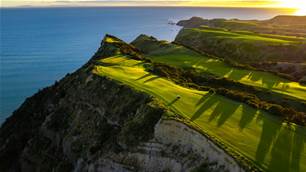
Course Review: Cape Kidnappers
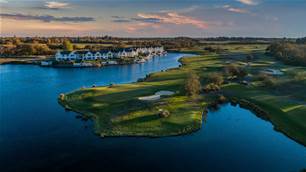
Review: Clearwater Golf Club

